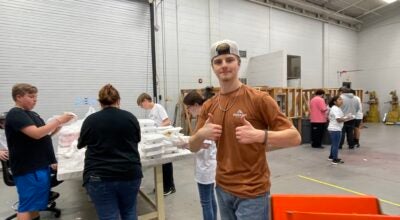Spotting Ambrosia Beetles
Published 6:50 pm Friday, January 27, 2017
By Ty Torrance
Ambrosia beetle presence has been reported recently in South Georgia. This is an important pest to pecan producers because they frequently attack young pecan trees, but the beetles will attack some landscape plants as well. These beetles can infect Japanese maples, crape myrtles, flowering cherry tree, redbud, or any smooth barked tree. The beetles direct feeding is not the main concern it is actually an associated fungus that causes tree death.
The female beetle emerges during the spring from her winter habitat and travels to a nearby tree. She then bores into the tree eating away as much as 1 inch of wood per day. As the female beetle tunnels into the trunk she ejects sawdust out of the entrance of the tunnel and this causes toothpick-like protrusions to stick out of the entrance of the tunnel. This is a key sign of the Asian ambrosia beetle.
The insect doesn’t actually eat the wood but excavates tunnels that serve as habitat. She carries a fungus on her back from her last home and introduces it into the tunnel. When her eggs hatch, the larvae feed on the fungus. Excess fungus not consumed by the larvae can clog the trees vascular system preventing it from moving water and nutrients. The majority of the beetles’ life cycle is spent inside the plant, making this beetle hard to control with insecticides. The only time it is out of the tree is when it emerges in early spring to find a tree to complete its life cycle.
The best way to control Asian ambrosia beetle damage is by prevention. Trees under stress will be targeted first by beetles, but they can attack relatively healthy trees as well. Do your best to avoid drought conditions or over-watering, physical injuries, and improper planting. Scouting for this pest is a very important tool. If you look for the insect damage early in the morning you will notice water soaked areas on the trunk of trees. These areas indicate the beetles have just begun to bore into the tree. If the insects are further along you may notice the sawdust toothpicks protruding from the tree. Inspect closely if you suspect an infection because the slightest wind can blow the toothpicks off of the trunk.
As mentioned before once the insect is inside the trunk control can be difficult, but if you notice damage early you can apply insecticides to the trunk. Homeowners should use outdoor tree and shrub insecticides containing bifenthrin. Affected plants and/or plant parts should be removed from the property. The trunks of remaining plants should be treated with an appropriate insecticide and monitored.
If you have any questions on this subject, please call the Extension Office at (229-248-3033).




